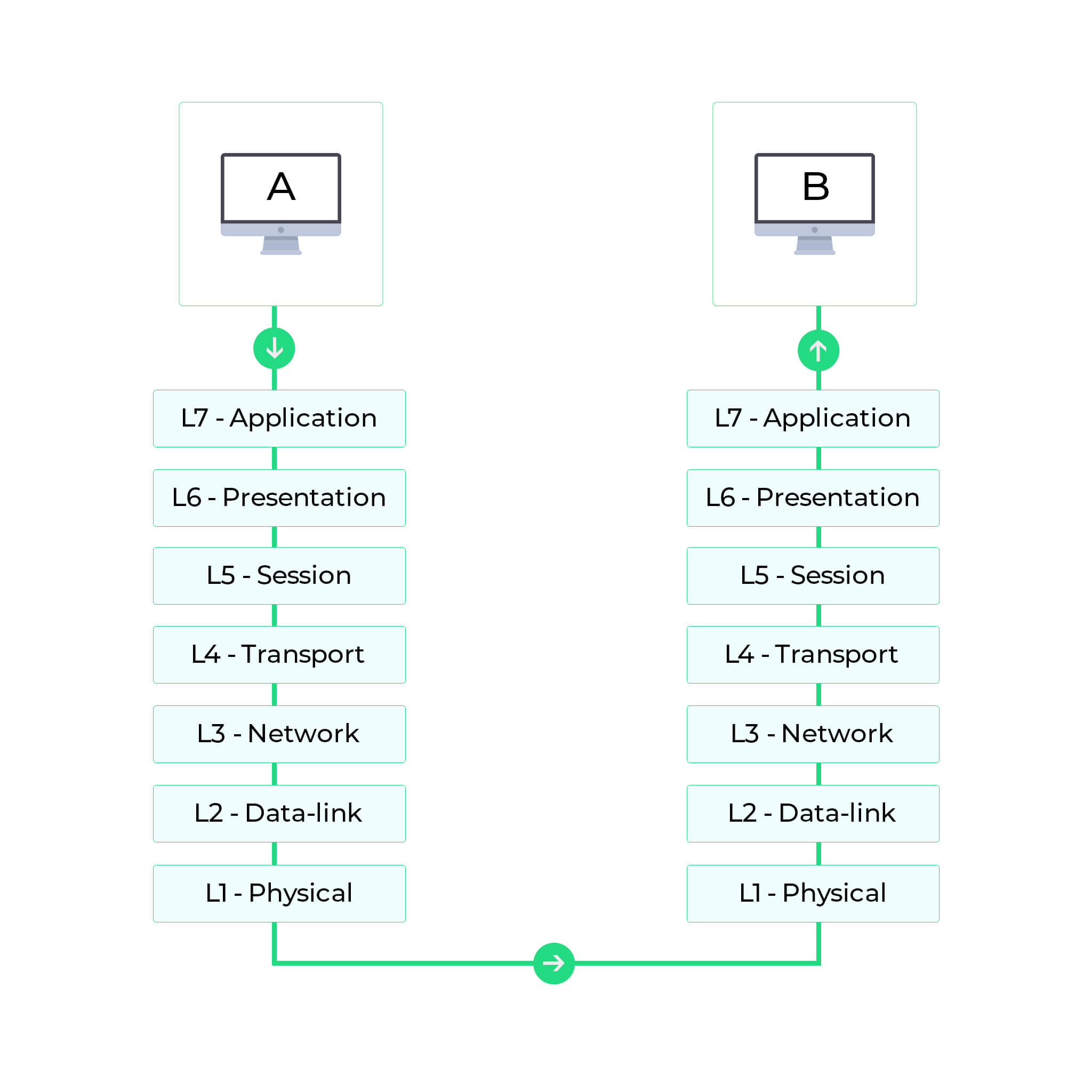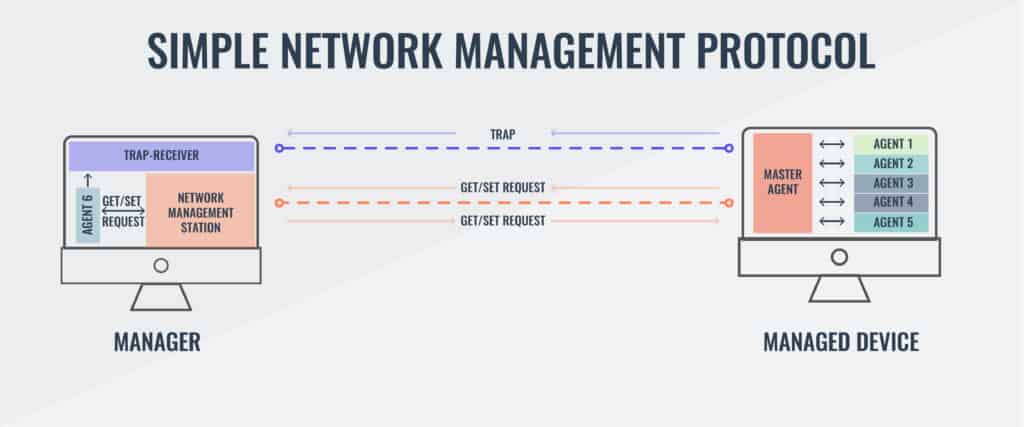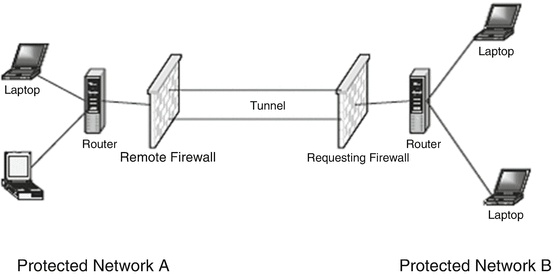Types of Network Protocols: The Ultimate Guide
You may be familiar with some forms of network protocols found in your everyday internet browsing. Two examples are HTTP and HTTPS. Did you know that, despite similar names, HTTP focuses on communication over a network while HTTPS adds a layer of security to your network communications? While the names may be similar, the functions are often different and work in conjunction to create a secure network that communicates quickly and efficiently. With that in mind, let’s examine the different types of protocols that allow a network to function at its peak, and how these protocols can benefit your business endeavors.
Types of Network Protocols

There are three main types of network protocols. These include network management protocols, network communication protocols and network security protocols:
- Communication protocols include basic data communication tools like TCP/IP and HTTP.
- Security protocols include HTTPS, SFTP, and SSL.
- Management protocols maintain and govern the network through protocols such as ICMP and SNMP.
Let’s take a closer look at each, so you can better understand their role in your network.
Network Communication Protocols
Communication protocols are vital to the functioning of a network. In fact, computer networks can’t exist without these protocols. These protocols formally describe the formats and rules by which data is transferred over the network. This is a must-have for exchanging messages between your computing systems and in telecommunications, applying to both hardware and software. Communication protocols also handle authentication and error detection as well as the syntax, synchronization and semantics that both analog and digital communications must abide by to function.
- HTTP – One of the most familiar protocols, hyper text transfer protocol (HTTP) is often referred to as the protocol of the internet. HTTP is an application layer protocol that allows the browser and server to communicate.
- TCP – Transmission Control Protocol (TCP) separates data into packets that can be shared over a network. These packets can then be sent by devices like switches and routers to the designated targets.
- UDP – User Datagram Protocol (UDP) works in a similar way to TCP, sending packets of data over the network. The key difference between the two is that TCP ensures a connection is made between the application and server, but UDP does not.
- IRC – Internet Relay Chat (IRC) is a text-based communication protocol. Software clients are used to communicate with servers and send messages to other clients. This protocol works well on networks with a large number of distributed machines.
Network Management Protocols

Network management protocols help define the policies and procedures used to monitor, manage and maintain your computer network, and help communicate these needs across the network to ensure stable communication and optimal performance across the board.
Generally, network managers can use a management protocol to troubleshoot connections between host and client devices. Management protocols provide network managers with the host connection’s status, availability, packet or data loss, and other related information about the health of the network connection. The policies managed by management protocols can be applied to all devices on the network, including computers, switches, routers and even servers. Two of the most common types of network management protocols include Simple Network Management Protocol (SNMP) and Internet Control Message Protocol (ICMP).
- SNMP – Simple Network Management Protocol (SNMP) is used to monitor and manage network devices. This TCP-based protocol allows administrators to view and modify endpoint information to alter the behavior of devices across the network. SNMP relies on the use of agents to collect and send data to an overarching SMNP manager, which in turn queries agents and gets their responses.
- ICMP – Internet Control Message Protocol (ICMP) is primarily used for diagnostic purposes. Managed devices on the network can use this protocol to send error messages, providing information regarding network connectivity issues between devices.
Network Security Protocols

Network security protocols work to ensure that data in transit over the network’s connections stays safe and secure. These protocols also define how the network secures data from any attempts to review or extract said data by illegitimate means. This helps ensure that no unauthorized users, services, or devices access your network data, and this works across all data types and network mediums being used.
Usually, network security protocols rely on encryption and cryptography to secure data so that only special algorithms, formulas and logical keys can make this data accessible. Some of the most popular protocols for network security include Secure Socket Layer (SSL), Secure File Transfer Protocol (SFTP) and Secure Hypertext Transfer Protocol (HTTPS).
- SSL – A Secure Socket Layer (SSL) is a network security protocol primarily used for ensuring secure internet connections and protecting sensitive data. This protocol can allow for server/client communication as well as server/server communication. Data transferred with SSL is encrypted to prevent it from being readable.
- SFTP – Secure File Transfer Protocol (SFTP), as its name might suggest, is used to securely transfer files across a network. Data is encrypted and the client and server are authenticated.
- HTTPS – Secure Hypertext Transfer Protocol is the secure version of HTTP. Data sent between the browser and server are encrypted to ensure protection.Which Network Protocol Types are Right for You?
Which Protocol is Right for You?
After examining the different types of protocols in computer networks, you may be wondering what is best for your business.
- For startups and small businesses, TCP and IP communication protocols are widely used and easy to manage.
- For faster, more efficient file transfer, your business may benefit from using FTP protocols instead of relying on HTTP alone.
- For security, HTTPS is ubiquitous and reliable for data transfer over the network.
- When managing networks, SNMP is still very widely used and is made even more efficient when working in conjunction with communication protocols like UDP.
We hope this guide to the different types of network protocols has been helpful. When you’re ready to find the best networking solutions for your business, our tech experts are here to address any questions you have. Let us help you make the best decisions for your network communication, security, and management needs.